Red dots or holographic sights…you’ve probably heard these terms before. But if you’re new to guns and gear, you might be asking, “what’s the difference?”
Further, you may also be questioning which is the best for you?
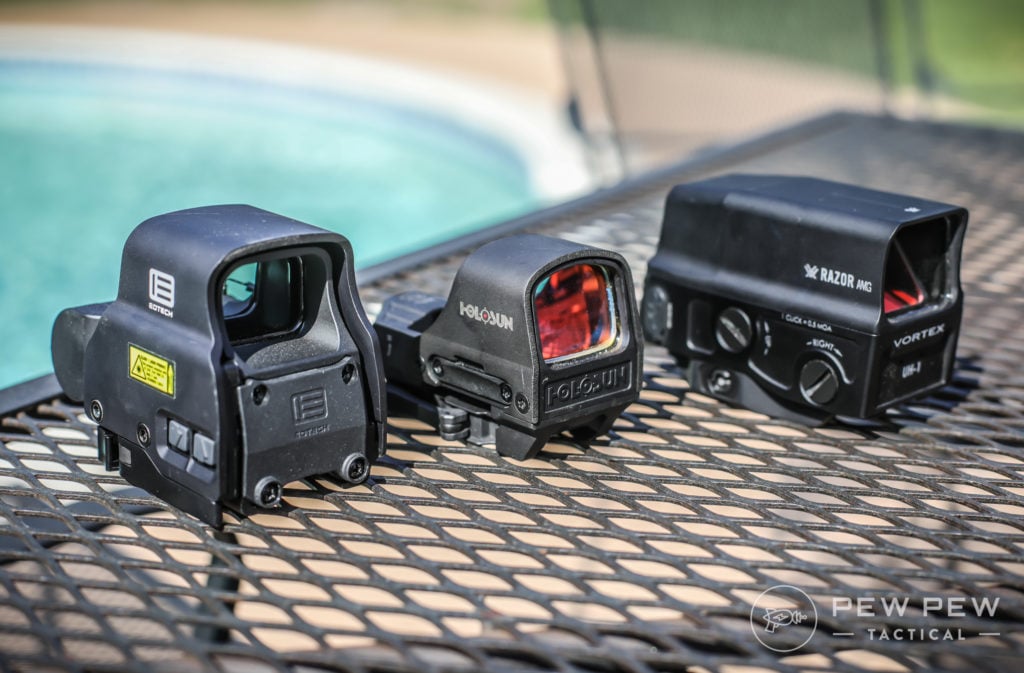
Well, we’re here to help! We’ll cover a lot of categories and choose the winner in each.
So by the end, you’ll know which kind of sight is the best for your situation.
If you’d rather see it all in action, check out our full video below.
And if that helped, subscribe to our YouTube channel since we add new videos every week!
THE QUICK LIST
-
Best Red Dot
-
Best Pistol Dot
-
Editor’s Pick
-
Best For Night Vision
Table of Contents
Loading…
Technology
First of all…what’s the difference technology-wise between red dots and holographic sights?
For the longest time, I thought it was that a red dot had a red dot reticle…and a holographic sight had the signature big ring and small dot reticle.
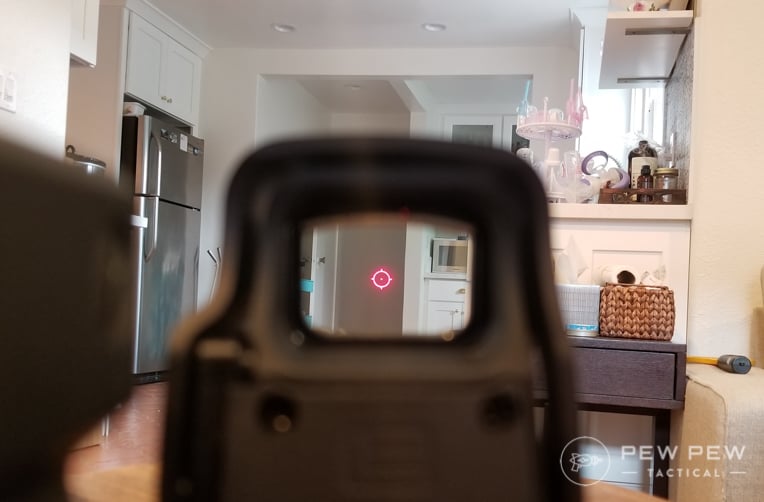
I was sorta right in that those are the big aesthetic differences. But once you look inside…
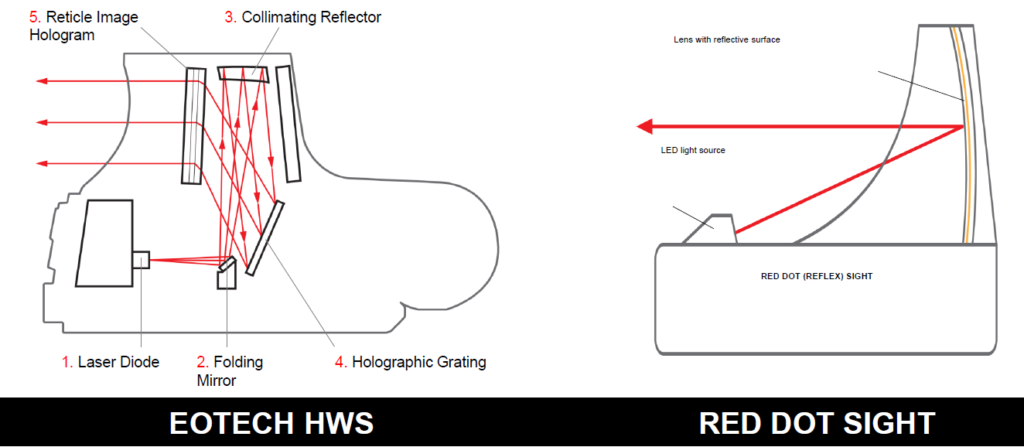
You’ll see that holographic sights are MUCH more complicated.
A red dot has an LED emitter that sends the beam towards the front glass, which is coated so that the beam/dot is reflected back to your eyes.
On the other hand, a holographic sight uses a laser and mirrors to send a hologram back to you (without using the front glass)…but which appears to be in front.
Price
With complication…comes a more expensive price tag.
You can get an okay red dot for sub $50 (my pick is the TRS-25)…
But I usually recommend going into the sub-$200 range for something more robust (Best Red Dots Under $200).
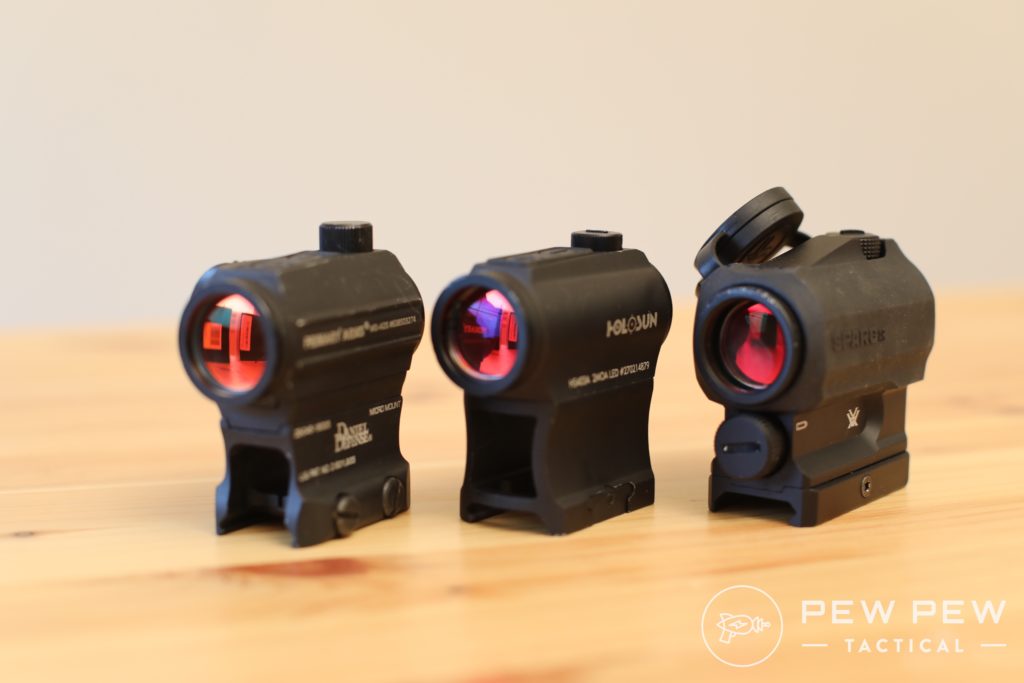
Like the Holosun…
Prices accurate at time of writing
Prices accurate at time of writing
-
25% off all OAKLEY products - OAKLEY25
Copied! Visit Merchant
Or my favorite bring-to-hell red dot is the Aimpoint PRO (our full review) which is around $400.
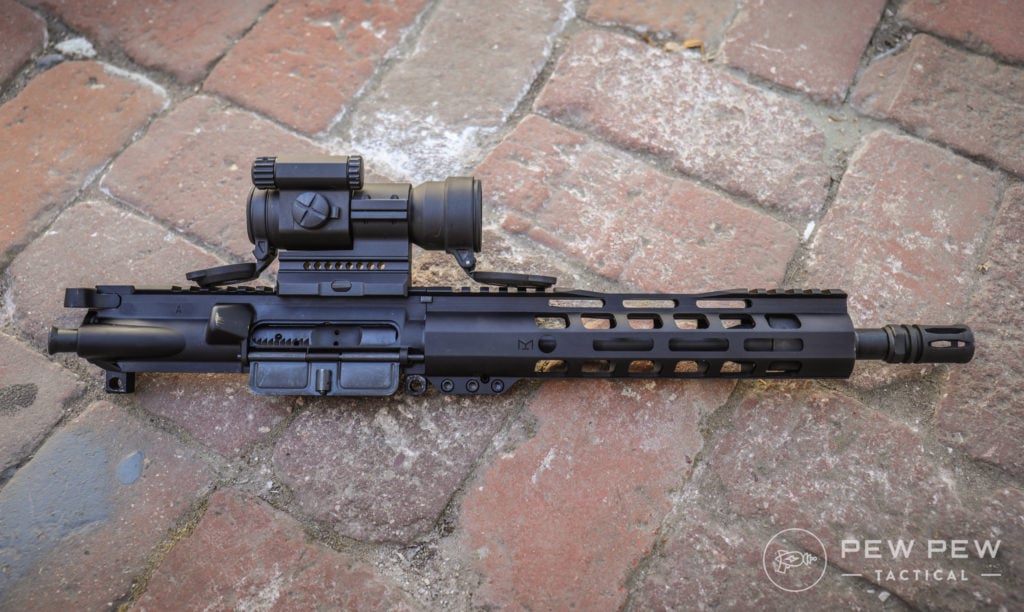
Prices accurate at time of writing
Prices accurate at time of writing
-
25% off all OAKLEY products - OAKLEY25
Copied! Visit Merchant
There are also a bazillion companies that make red dots.
But as far as holographic sights…EOTech and Vortex are the best known.
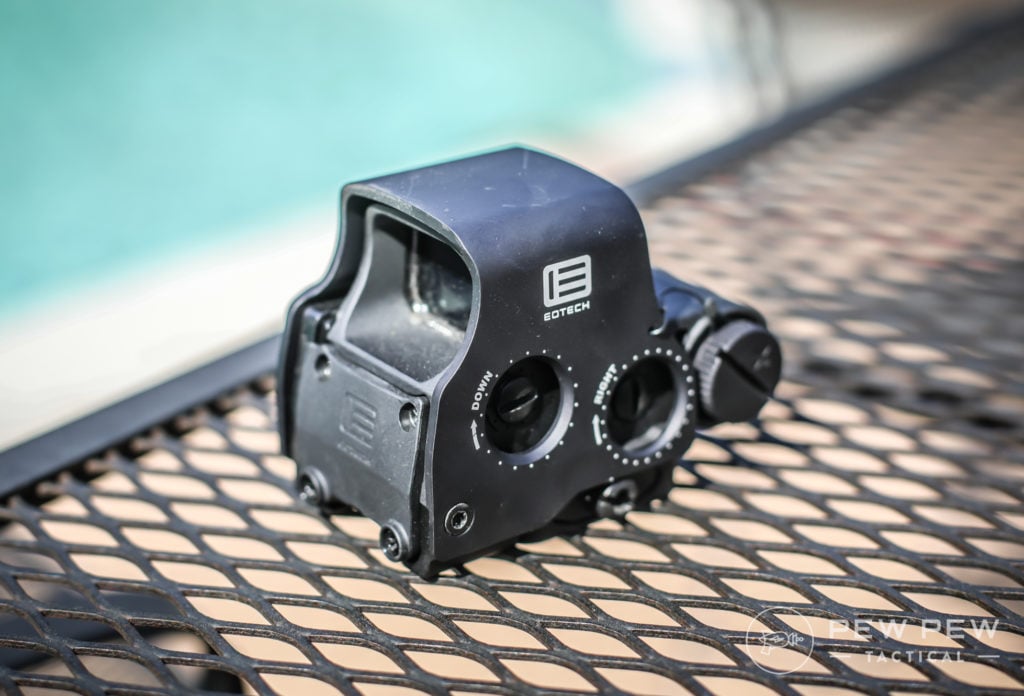
Vortex makes a ton of red dots and magnified scopes, so it makes sense that they’d eventually jump into the holographic sight market.
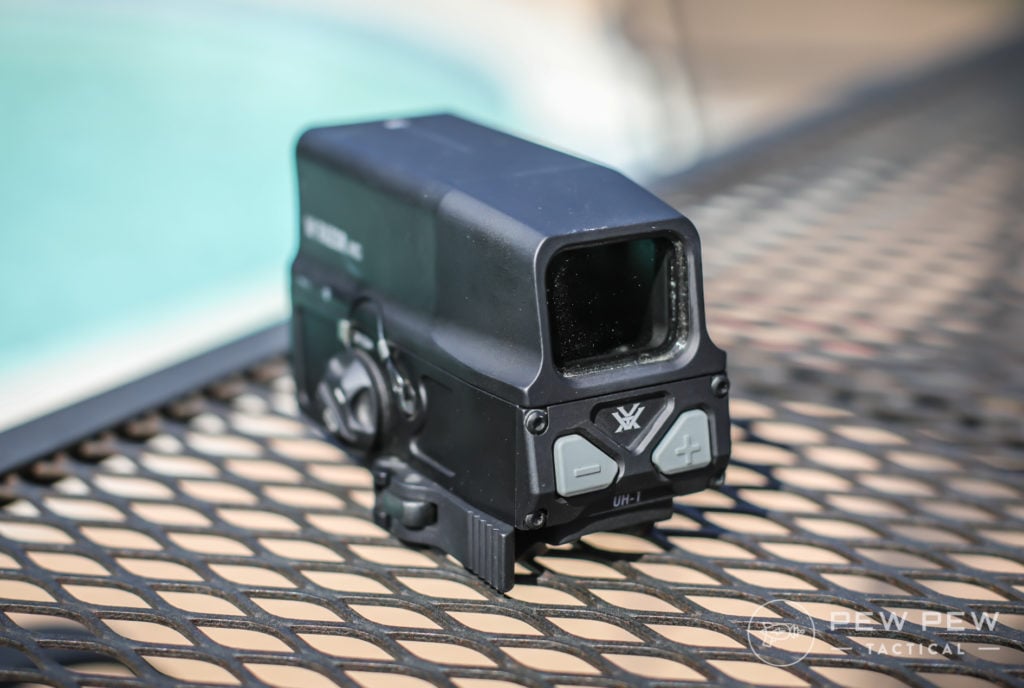
Holographics tend to run higher price-wise, but are they worth it…read on!
Winner in Price: Red Dots (wide range of pricing)
Size
Does size matter?
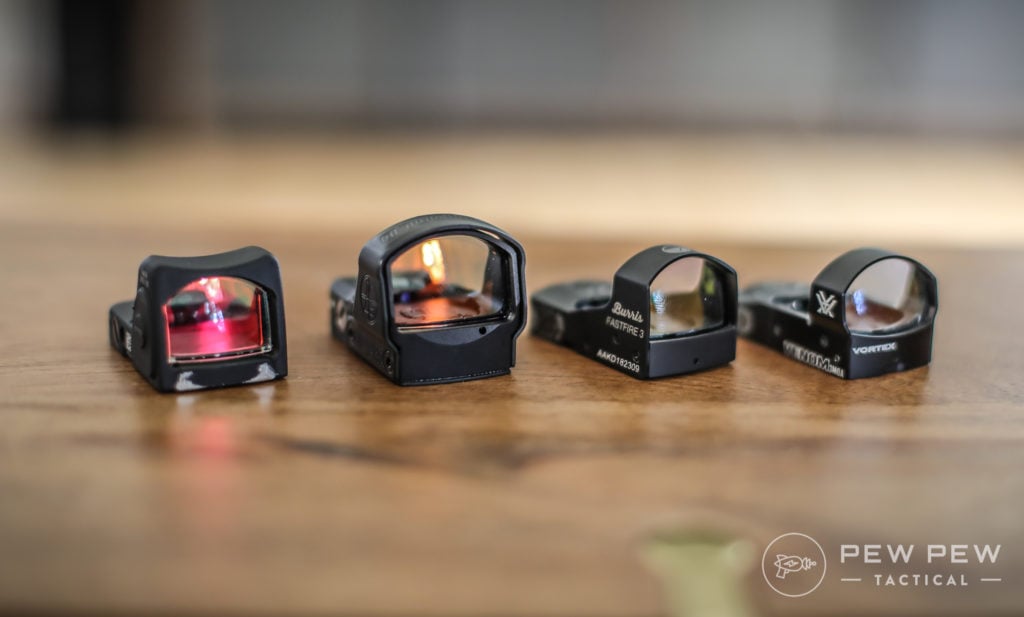
If you want it small…you’ll go with red dots. Since the technology is easier, there are plenty of smaller options that can fit on both rifles and handguns.
You can see the whole gamut in our Best Pistol Red Dots article.
Prices accurate at time of writing
Prices accurate at time of writing
-
25% off all OAKLEY products - OAKLEY25
Copied! Visit Merchant
As for holographic sights…they aren’t HUGE, but they currently aren’t available in teeny-tiny versions.
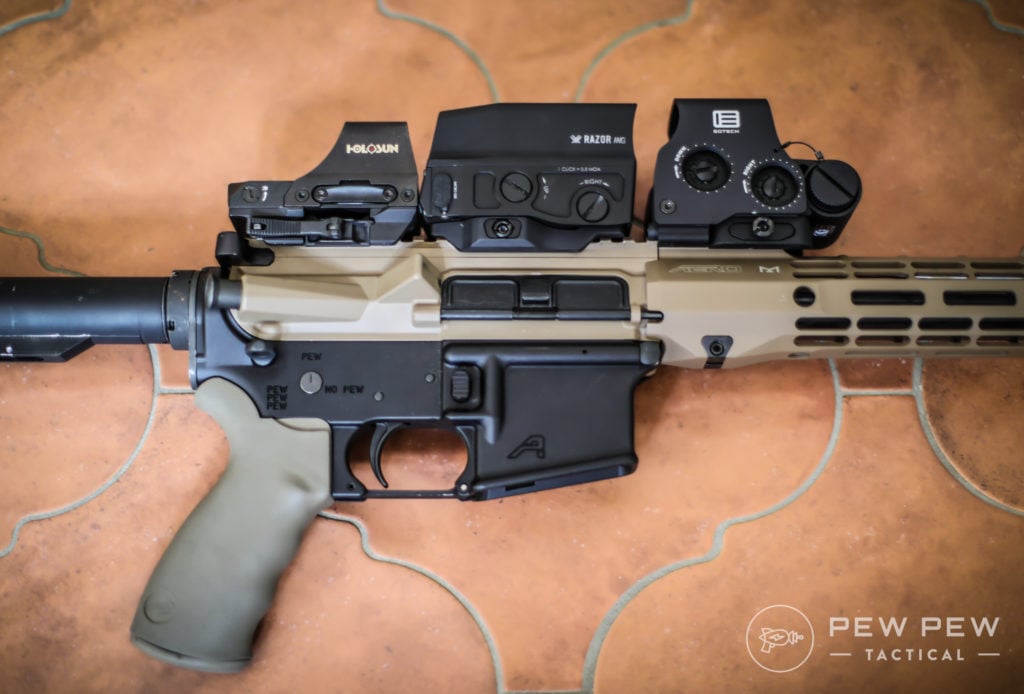
Winner in Size: Red Dots
Durability
This one varies since both top-of-the-line models (Aimpoint & EOTech) in each category have awesome stories of surviving tons of abuse.
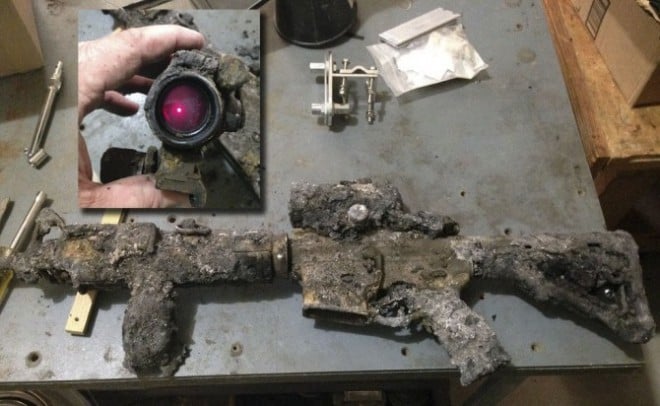
If you have the money, you can get literally bombproof optics that will withstand a huge range of temperatures, g-forces, and water depths and still keep on ticking.
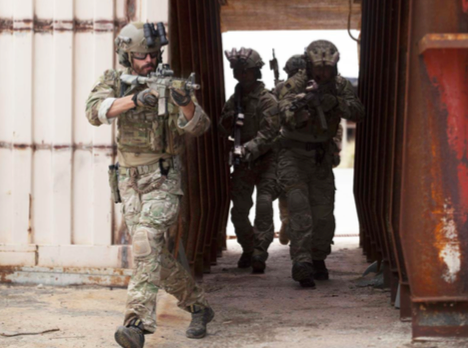
Some cheaper red dots are rated only for airsoft.
And yes…EOTech did have the fiasco with thermal drift (zero shifted beyond specs when subjected to big temperature shifts).
But USSOCOM (special operations command) again chose EOTech as the optic of choice after the problem was fixed.
And remember when we mentioned that holographic sights didn’t need the front window to function? Here’s the proof…
Useful if you have frag coming at you from the front.
Or even if there’s mud or other residue, it will still work as long as there’s some partial window available.
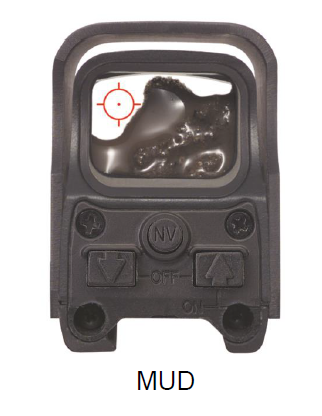
Winner in Durability: Holographic
Power
Red dots use power-saving LEDs, while holographic sights require lasers to power their holograms.
That’s how a couple of red dots have battery power of up to 50,000 hours. Basically, that means you could leave it on for 5+ years.
Compared with holographic sights that usually offer 500 to 1,000 hours of battery life, red dots are the clear winners.
Winner in Power: Red Dot
Reticles (Color & Pattern)
You’re going to be staring at the reticle the most…let’s take a look at a couple of angles.
Color
Both red dots and holographic sights are usually red since it’s easy for the eyes to pick up.

But now both have green versions, which are even easier on the eyes.
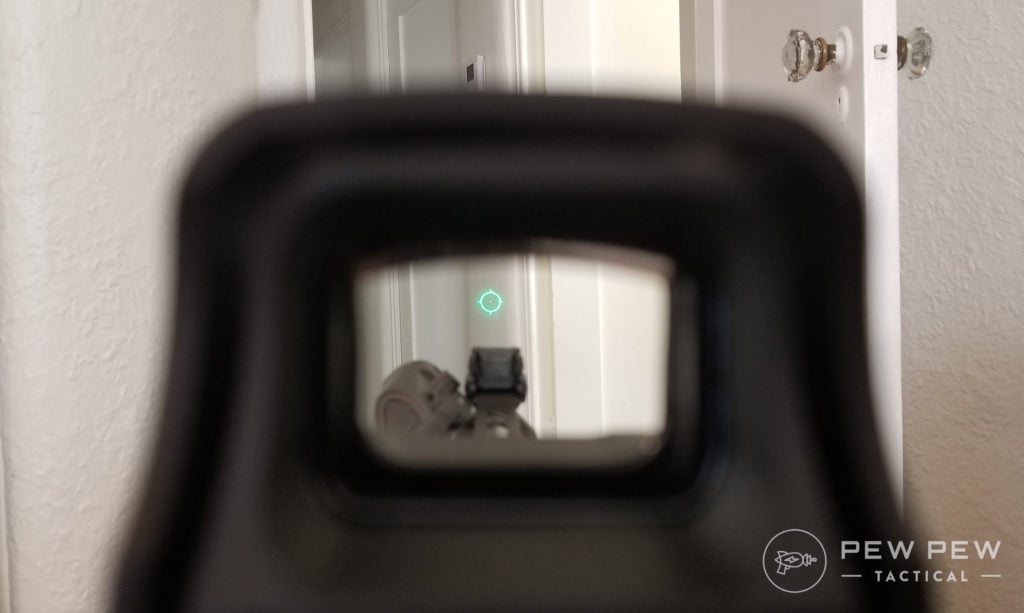
However, green isn’t as good when you move between differently lit areas, such as clearing a first-floor room and then going into the basement.
I really like green for competition since I pick it up easier, and lighting outside is nearly constant.
My favorite green dot is the Trijicon MRO.
Prices accurate at time of writing
Prices accurate at time of writing
-
25% off all OAKLEY products - OAKLEY25
Copied! Visit Merchant
Reticle
I really like the large ring with the small dot reticle in holographics. Here’s an example from Vortex’s holographic UH-1 through a three-power magnifier.
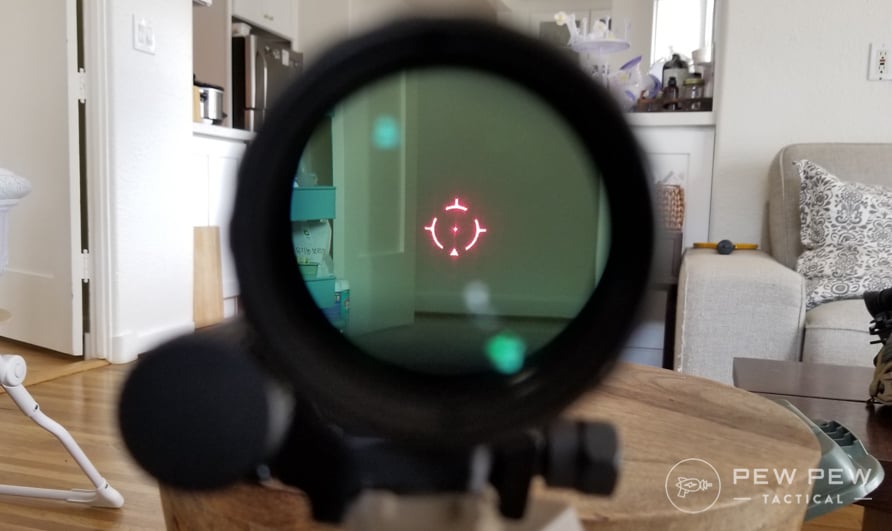
Prices accurate at time of writing
Prices accurate at time of writing
-
25% off all OAKLEY products - OAKLEY25
Copied! Visit Merchant
And the OG “Speed Ring” from EOTech.
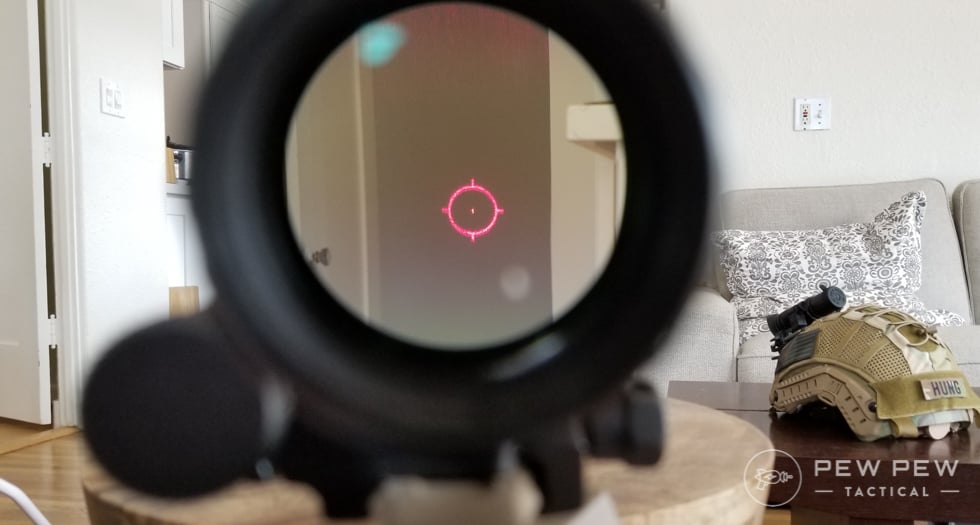
Prices accurate at time of writing
Prices accurate at time of writing
-
25% off all OAKLEY products - OAKLEY25
Copied! Visit Merchant
Plus, something new I learned is that you can use it to range too…

EOTech’s center dot is 1 MOA, while the smallest red dots only get to 2 MOA.
That means at 100-yards, the dot will cover 1-inch compared to 2-inches, and at 200-yards, it will cover 2-inches compared to 4-inches.
BUT…if the reticle is one thing you love…you can always opt for Holosun’s 510C, which is technically a red dot, and so it runs for tens of thousands of hours.
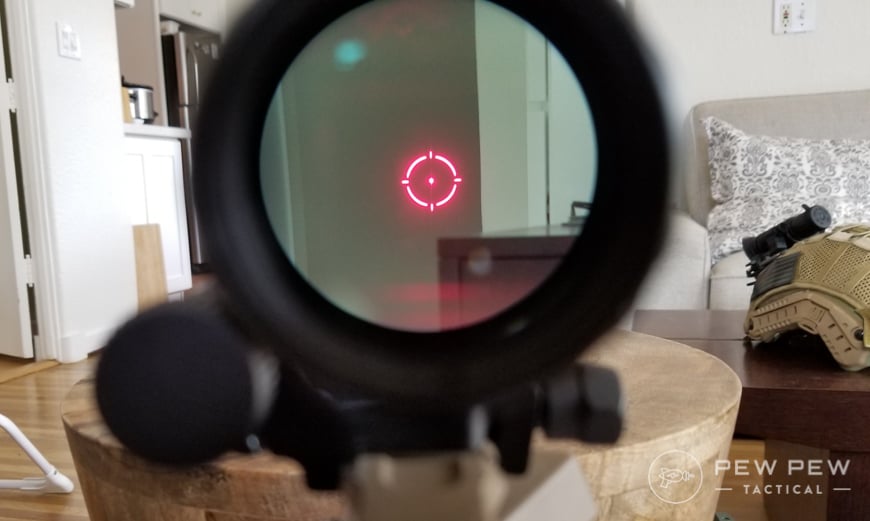
Prices accurate at time of writing
Prices accurate at time of writing
-
25% off all OAKLEY products - OAKLEY25
Copied! Visit Merchant
What’s your take on the 510C, which combines the awesome holographic reticle with red dot price and power consumption?
Winner in Reticle: Tie
Astigmatism
If you have astigmatism…red dots will look like a starburst or a mishmash of squiggly lines.
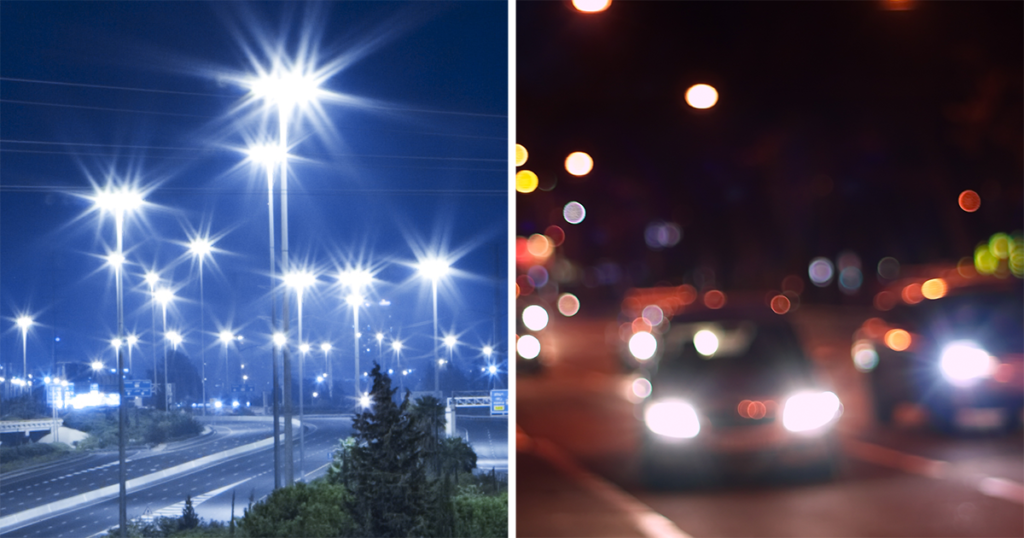
Holographic sights will usually work better for those with astigmatism.
We have some pretty good options lined up for those of you with astigmatism in our Best Pistol & Rifle Optics for Shooters with Astigmatism.
Winner: Holographic
Night Vision
Both red dots and holographic sights have night vision compatible models.
These are ones with dimmer settings that won’t cause damage to night vision devices (Best Night Vision Goggles).
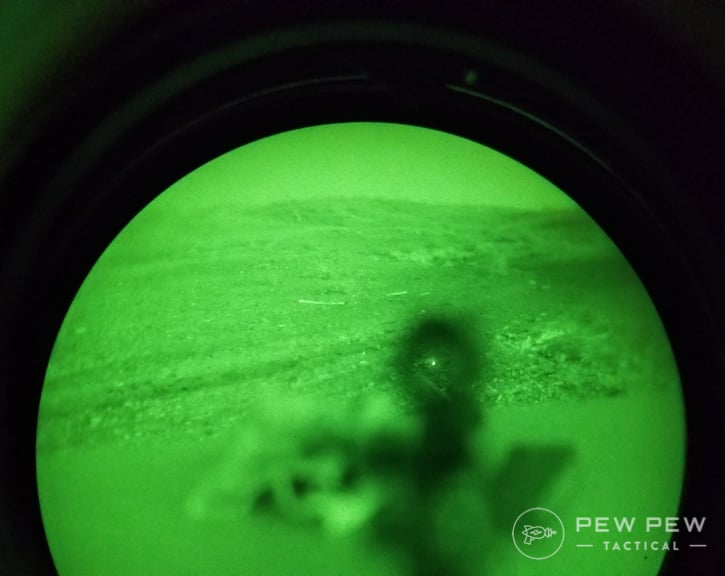
Winner: Tie
Magnification
Both red dots and holographic sights can have magnifiers in front of them (Best 3x Magnifiers).
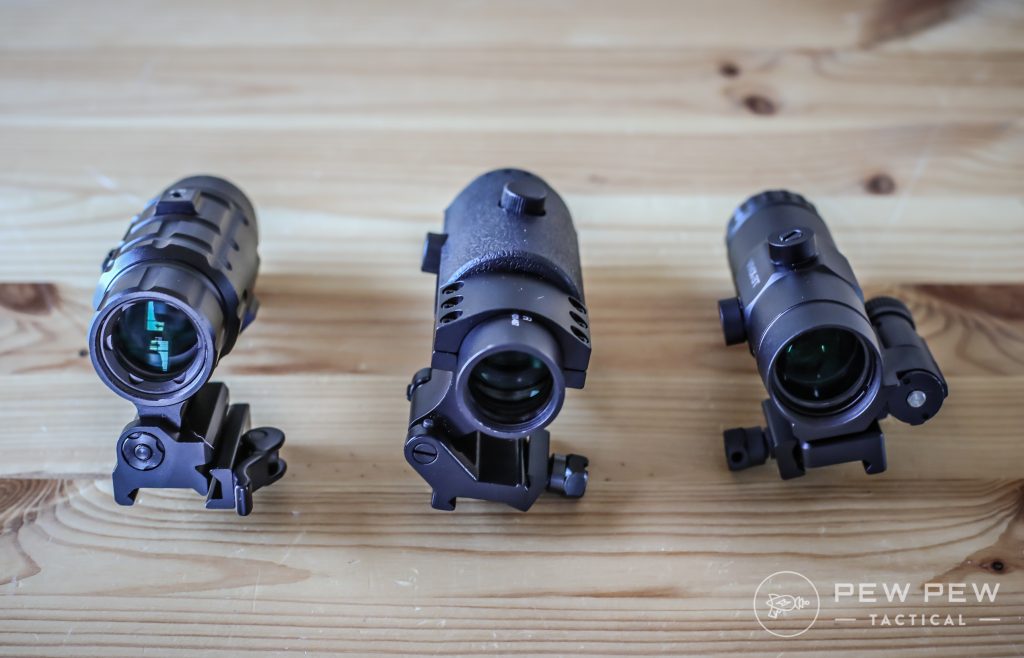
Remember that EOTech’s center dot is 1 MOA while red dots can only get down to 2 MOA?
When you put a magnifier in front of a 2 MOA red dot…it now becomes 6 MOA.
Here’s an example with a 4 MOA red dot that becomes 12 MOA when magnified. But you get the picture…it covers more of the target.
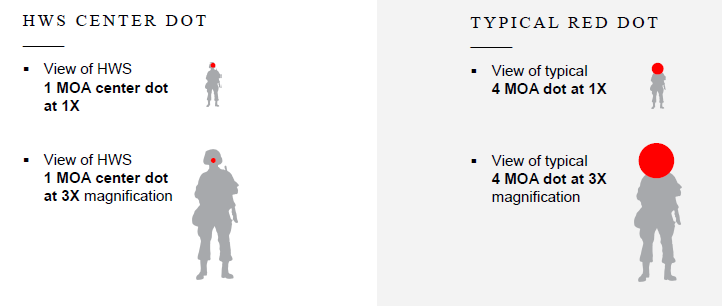
My real-life test…
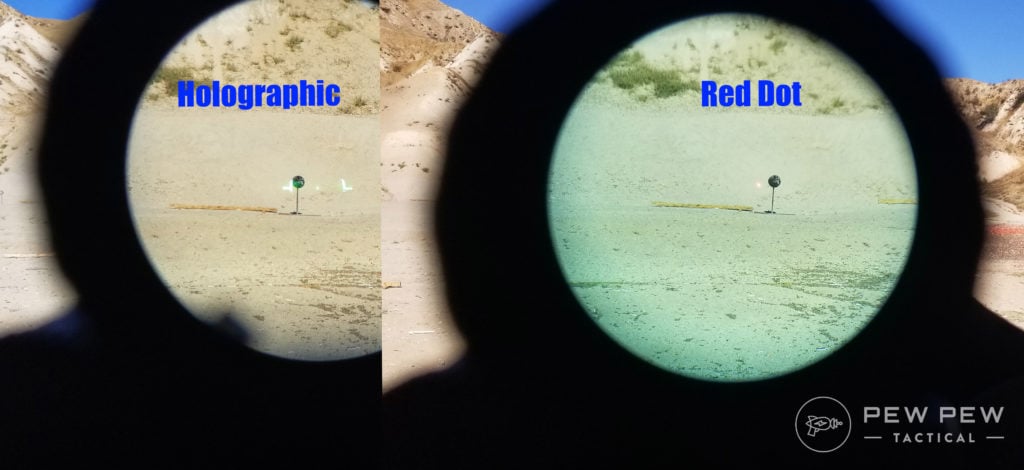
This shows the holographic reticle is a bit smaller than the red dot.
Now get ready to get your mind blown…when you magnify the EOTech, the 1 MOA dot stays the same.
The smallest light the human eye can see is 1 MOA. But with holographic technology, the dot is actually super small (microns).
When you magnify something tiny, it’s still tiny. And so our eyes still see it as 1 MOA.
That’s why you can put any magnifier in front of a holographic sight, and it still shows up 1 MOA.
Winner in Magnification: Holographic
Field of View
One significant point of having an electronic sight is that you can have both eyes open.
But if the sight itself has a small window like on a pistol red dot…
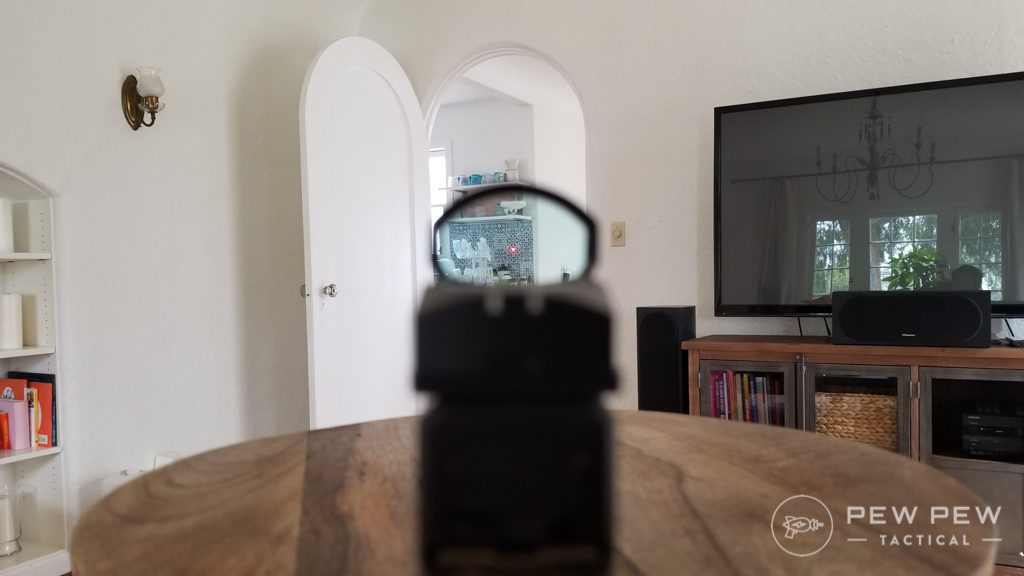
You’re going to have to get behind it a little more on target.
Or there are the very popular tubes of Aimpoints and others…
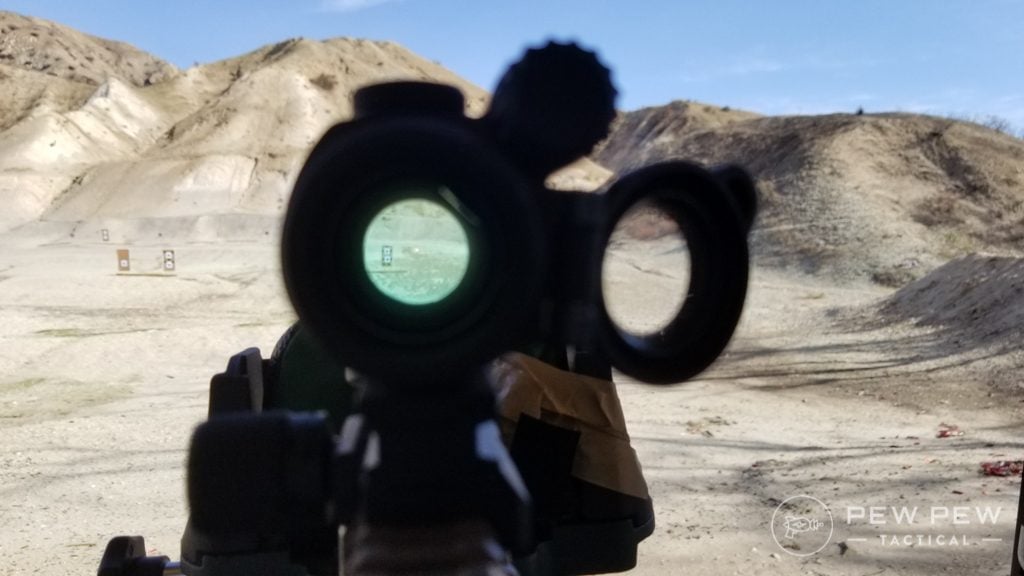
Versus the more rectangular view of holographics.

Overall…I’d say holographics get the win, but there’s also a wide range of FOV for red dots.
Winner in Field of View: Holographics
Acquisition Speed
Our last one…and probably what you’ve been waiting for…
Both red dots and holographic sights are MUCH faster than traditional irons.
But remember the technology inside?

Red dots will focus the dot to your eyeball, so the focal distance is basically at the sight, while holographic sights project the reticle hologram out in front of the sight.
Why’s this matter?
Your eye can only focus on one thing at a time…and if it’s choosing between something close at the sight (red dot) and the actual target, it can slow you down.
Holographic sights superimpose on your target. Watch as the reticle comes into focus when I focus on the targets.
Plus, the Speed Ring reticle makes it easier for quick closeup shots and the 1 MOA dot makes it easy for more accurate shots.
Winner in Acquisition: Holographic
Final Thoughts & Favorites
The perks of holographic sights are there, but they come at a much steeper price of entry (Best Holographic Sights).
Prices accurate at time of writing
Prices accurate at time of writing
-
25% off all OAKLEY products - OAKLEY25
Copied! Visit Merchant
If you’re just starting with electronic sights, I’d recommend a red dot (Best Red Dots).
Prices accurate at time of writing
Prices accurate at time of writing
-
25% off all OAKLEY products - OAKLEY25
Copied! Visit Merchant
You might be a little bit faster with a holographic or can shoot better at 300+ yards magnified.
But you have to decide if that’s worth it.
Are holographics worth the price of admission? Let us know in the comments below. Looking for something magnified or the best irons…check out Best AR-15 Optics & Scopes.

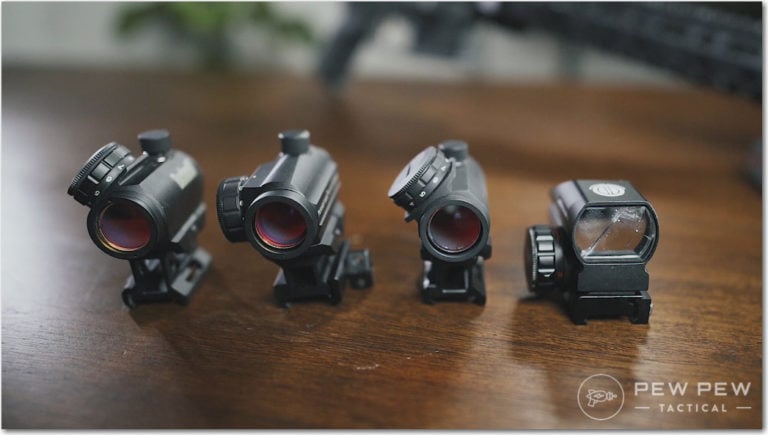
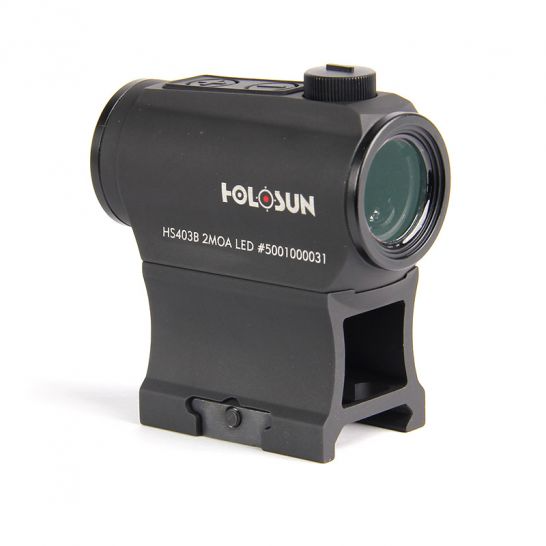
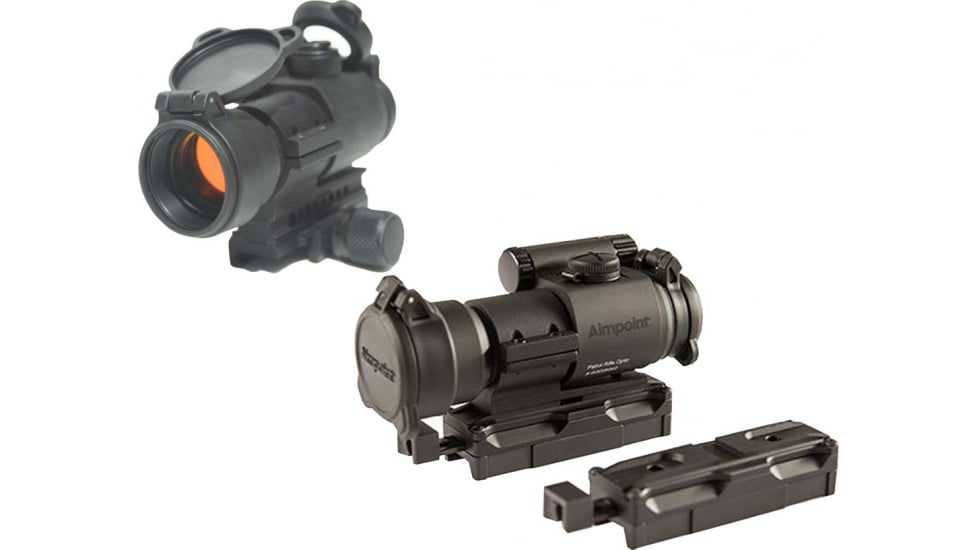
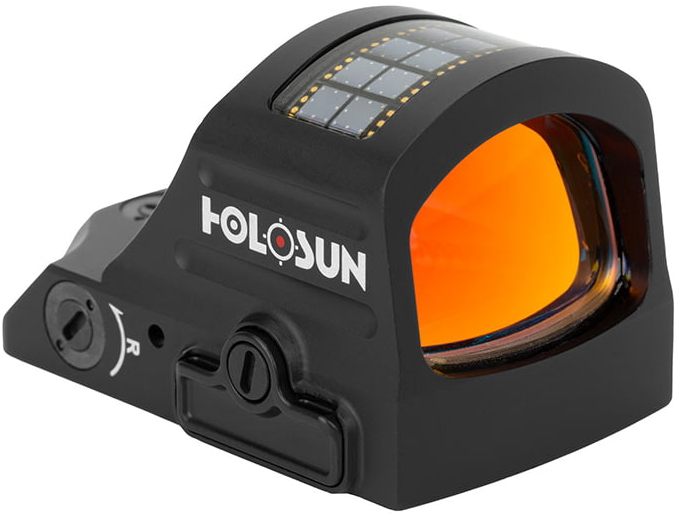
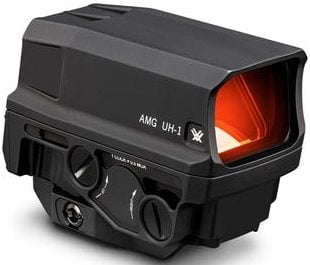
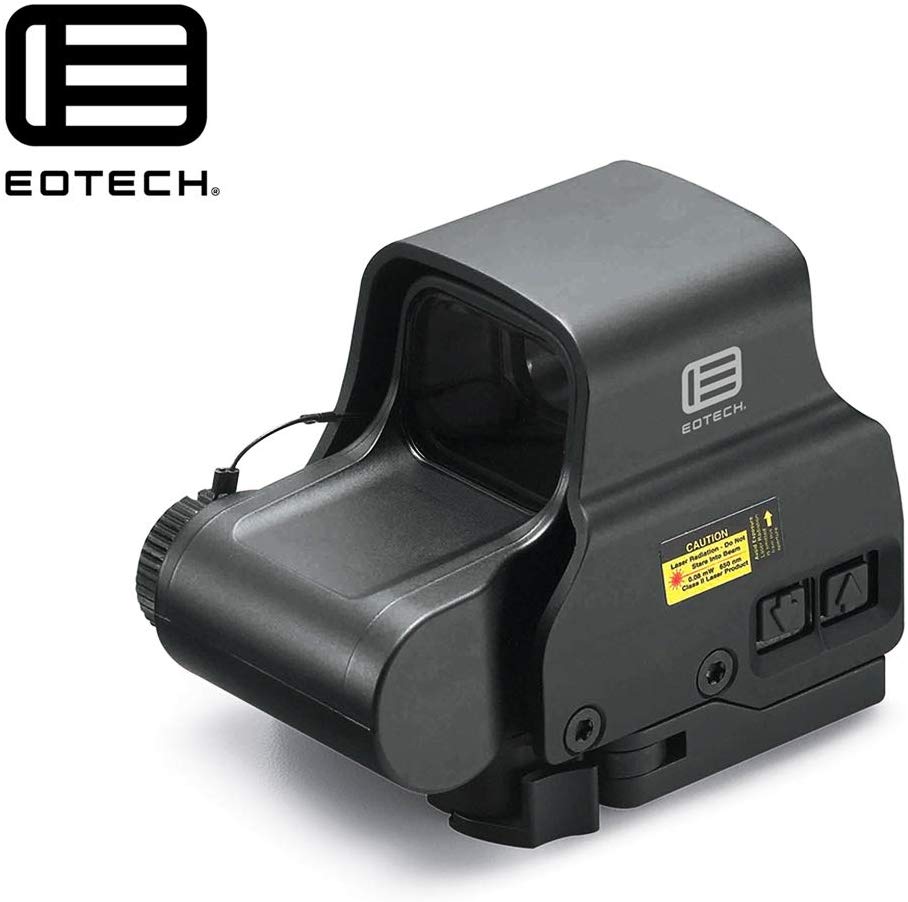
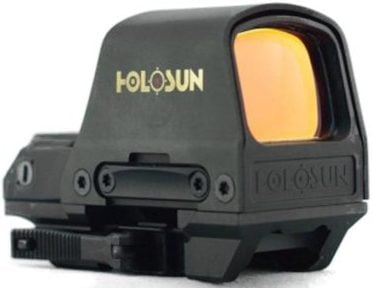







65 Leave a Reply
You're comment regarding the eye and it's inability to focus on 2 objects at differing distance is correct. That said, holographic sights do not negate that fact. Red dot/holographic sights do not change the fact that you are either focusing on the target or focusing on the dot.
These red dots are very robust but it seems to me they are unnecessarily being subjected to high shock loads when mounted on a pistol's slide as is required with a Remington action. The fixed barrel on my TX-22 is a solid mounting point as it has clearance machined into the slide. Likewise, the Softcoil gas relief system on my Walther CCP in .380 or 9mm would allow direct mounting on the barrel were the slide to be likewise machined.
Spends $1000 on a quality carbine for home defense.
Spends hundreds of dollars on ammunition and range time to become competent.
Decides to save a couple hundred dollars by going with a red dot sight instead of a holographic site.
Dies during a home invasion.
Not sure what facts you are using for your conclusion. I can't state statistics, but you probably can't either. I have both Aimpoints and EOTechs. It's what you trinwiththatmatters most. I shoot out to 500 yards with both at man size metallic targets. I do CQB training with both, they all allow both eyes open aiming. I have 15 year old Aimpoints with the original battery, EOTech requires yearly changing, so all my "fighting" Sights get yearly changes on my birthday, except for that plinking rifle. None of my hard use Aimpoints have ever failed. My newest EOTech went to the factory at year three...a mirror came off after a mild shooting session. I prefer Aimpoints for the simple dot, long battery life, reliability, and it's what I practice with the most. So, no one will die during an home Invation because you chose one over the other, thats not how it works, just practice with the one you do choose!
Hmmm...Guy craps on anybody who can't purchase fake skill. Guy then breaks 1,000 dollar optic and dies in gun fight because he couldn't function with iron sights.
I decided to go with Trijicon because it’s been tested abroad. You can see how tough and well made it is. I went with the MRO HD and the magnifier for my SBR. I liked the holographic sights because the wide view tends to help me with target acquisition. However, when I tried the MRO, it had a large tubular FOV which made it easy to use w/both eyes open. The reticle brightness is adjustable and ambi, you can swap to center dot only or full reticle, and it can Co-witness. The red works better for me and the sight is pretty accurate. I’m still gonna get a holographic for my other rifle (16”) for comparison. I’ll compare them at the range. Takes time to get used to it coming from iron sights. Good helpful review.
It was my understanding that only exps3 had NV settings. Sorry if I'm twisting an earlier comment, too many to read thru.
Eotech Breakdown: 500 Series (currently produced) use AA batteries.
512 is NON-NVG, Full COwit sight.
518: NON-NVG, lower 1/3 Sight.
552: Full COwit, NVG compat.
558: Lower 1/3 sight, NVG compat.
XPS Series:
the "E" at the beginning dictates if it's a Full COwitness or lower 1/3.
non E is full COwit, E is lower 1/3
the "2" series is non-NVG, while the "3" series is NVG compat.
hope this isn't too confusing... if it is, tell Eotech.
1. The 'red dot' in red dots sights (RDS) do not actually increase in size (MOA) with a magnifier, so, for example, a 2 MOA dot is still 2 MOA with a magnifier. It is magnified in the view but its still the same MOA area in relation to the target. A magnifier can increase the appearance of aberration in the dot to users with astigmatism issues.
2. The reason dots in RDS appear blurry or distorted to people with an astigmatism is because the dot is created in the view with a collimating minating mirror. This causes the light that creates the dot to be refracted into multiple multiple focal points. The result is a blurry, distorted or “bursting” dot. Polarized glasses and the small hole in the BUIS help to sharpen the dot because both devices restrict the light rays entering your eye to only those that are both direct and parallel with the other light rays, eliminating reflections and some of the additional focal points.
3. Holographic Weapon Sights (HWS) use a similar principal to red dots but uses different methods. One difference comes from the light bouncing off a “holographic grate” rather than into a single dot. For shooters with an astigmatism HWS dots can appear to have less distortion than a RDS because the holographic grate has a side effect of acting like a polarizing filer thus restricting the light rays entering your eye to only those that are both direct and parallel with the other light rays. But it is not true that HWS products are completely astigmatic aberration free.
4. Prism-based optics function more like traditional optics using lenses and etched glass to produce their reticles. Because of the lack of collimator or mirrors, most people with astigmatisms report less aberrations as compared to RDS or HWS systems.
5. With either HWS or RDS you should be focused on the target with both eyes open anyway and not the dot/reticle. This uses a natural ability of the eye called 'binocular vision' (medical term is 'stereopsis'). This allows the dot to appear to be superimposed over the target rather than pointed on to the target. Its the same principal in what is called 'target focused shooting', and works for open iron sights too but the open iron sights will appear blurry if you are doing it properly where the red dot will not appear blurry because its a 'bright light'. But once you get it down and practice with it some your target engagement time and hits on target is going to improve for that defense use training ya been doing.
I've been through a bunch of EoTechs and AimPoints and Sig and the other high cost options over the years. Everyone of them were, are, great sights no doubt about it. Lots of bells and whistles and stuff. But when it comes to going 'bang' they all do the same thing and that is give you a 'reticle/point reference' to place on the target. And when it comes to price they can be a 'well, ya get quality if you pay for it." and that's true but does that mean that something that costs less and does the same thing reliably is not 'quality'?
But then I decided to try the lower cost Sig Romeo MSR and the Romeo5 on my MSR rifles. Depending on where you shop you can pick up a Romeo5 for under $120.00 with the MSR being had for less than $100.00. I'll stick with these from now on if I need a red dot for an MSR. If I were going into combat (those days are behind me now) I might think about a 'bomb proof' and 'battle proven' optic with its higher cost, but face it ... 99.99999% of civilian shooters will be able to do the same thing with a Sig Sig Romeo MSR and the Romeo5 or other brand quality lower cost red dot in 99.99999% of their uses including home/self defense.
Preach, bro! I’ve been explaining to my shooting buddies the same thing about red dots and how to use them. Some are willing to try them, but reluctant to spend the money on good optics, don’t train enough or buy cheap crap which only puts them off red dots.
Thanks for the writeup. Saved me the effort. If not biased, the article is definitely trying to make Holographics sound more capable.
Whoa, whoa, whoa now....this is from the 6 best 3X red dot magnifiers article..."Also worth mentioning, red dots DO NOT increase in size with a magnifier. This is a piece of lore that just won’t die. The claim is that a 2 MOA dot will cover 2-inches at 100-yards, 4-inches at 200-yards, etc. But this is totally and completely false." I'm thinking the only thing wrong in this current article is the sentence..." But you get the picture…it covers more of the target." That would seem to be contradictory? Either way, great article as always Eric.
Thank you!!! This myth really won’t die.
2 MOA is 2 inches on 1x at 100 yards.
2 MOA is still 2 inches on 3x at 100 yards.
Yes, the dot is 3x as large, but so is the target and everything else in the window. The minutes covered by the dot does not change.
I like PPT but this article has a lot of bad info. Like how the author repeatedly labels the 510c as a holographic but also acknowledges it’s not at one point? That’d odd.
Also the part about a holo reticle staying the same size under a magnifier...that isn’t true either. It magnifies just the same as a red dot will.
I've had great luck with Sig red dots - Use the Romeo5 or MSR on my AR's, and the Romeo1 and Romeo1 Pro on my pistols. All at a great price, and they work well. I've learned to cope with my astigmatism.
My Holo's work really well too, but my eye has similar problems with the holo image when using the ring and dot setting - single dot works better.
Price made a big difference when outfitting a quantity of firearms.
Red dots superimpose on your target as well, you should be shooting both eyes open.
red dots and holographic are still about the same today as they were two years ago with this article was originally published. Its grossly outdated though in some aspects. Are you guys running out of things to write?
best value buys in my opinion :
Sig Sauer SOR52001 Romeo5 - $124.00 on Amazon
and if you don't need MOTAC, then the Romeo MSR, under $100.00 in some places
Have both, great red dots, never had a moments trouble with them no matter how much I abused them.
I have a Sig Romeo 5, an Eotech 512, and a Primary Arms 3x prism. They are all decent optics, but they can’t hold a candle to my Trijicon MRO green dot. It stands out as my best optic hands down.
This Review is over 2 years old....
Are there any 'NEW' Recommendations since then?
The review has been consistently updated when needed and these recommendations are current.
They all look great BUUUT I love my TRS-25. It gets the job done. I'm not going to be crawling through mud, rain, dodging lightning bolts or Talaban. The majority of the time I'm shooting paper out to 50 yards. Someday, when covid allows, I can get to an outside range. I have only a SW 22 Victory but it's for fun or short range protection. I have a Glock 19 for protection as well. But I love my TRS-25. I can cut out the black center of targets with it. That's fun. I would like to try holographic sights but they are way too expensive for this senior.
The EOTech I auditioned was very fuzzy. Hated it and went with a Sig Romeo8H. Love it but $$$.
Great information, thanks for putting this together.
I own both and mostly because of price. I have three Holographics, EOtechs and about fiver red dots which are an assortment of Vortex and SIG Roveo5's. I very much prefer (if price were not an issue) the Holograms for the many reasons specified. But the red dot market has become (in the past few years) so improved the difference in price drives me to that platform. If the money was the same, it would be Holoram all the way but it is not and that is why I have moved toward the red dots. Power is in fact another issue but I was aware of that from the beginning and I always have spare batteries with me at all times and I also regularly change them out to insure freshness. For me the hologram (as far as in use in the field) is the clear winner but because of price, I have been driven to use the Red Dot as well, and like I said, improvements over the past few years has made that easy also.
Can someone clarify me why the Holosun is called by many an holographic sight? It looks to me like an reflex sight ("red dot") emulating a holographic sight.
The HOLOSUN sights are traditional red dot sights, not holographic.
Have the new for 2020 HOLOSUN 509T and I seen no parallax and HOLOSUN says it has no parallax.
CONCLUSION: I put my 509T on my RUGER 57 pistol but it should just s well go on my PS90 sub gun INSTEAD of an EoTEC.
->I can chose circle with dot, dot only or circle only.
->The lowest 2 settings are for use with night vision goggles
->It has a solar panel to take over in case of battery failure.
->A "Shake Awake" feature automatically turns it on with motion and off after 10 minutes when still.
->Its titanium housing is light but as strong as steel.
->About $200. less than the similar AIMPOINT ACRO P1 but the 509T has many more features.
I agree with Mark Wynn, but how do traditional scopes compare to red dots & holographs? Are they becoming obsolete?
Not at all! As good as red dots and holographic sights are, they still fundamentally lack range. Even with a magnifier, you're still limited in many ways. This is where scopes come into play. We cover some great ones in our Best 1-6x Scopes and Best Long Range Scopes articles.
Now standard iron sights...those are, IMO, going to become obsolete someday. We're not there yet, but the day is coming sooner than we might think.
Impressive research, Hung ... probably the most useful and well-written treatise on a firearms device I've read to date. Went up and down the cognitive scale, from technical to plain-talk. Answered questions I have about going to such sights as, with various glasses, I can now see either the back sight, or the front sight, or the target. Keep up the good work!
I've been using an EOTech holographic sight on my shotgun for a number of years, shooting everything from #7 shot to 00 to slugs. At 100 feet and not much if any time spent trying to line the sight up with the target, everything always seems to go exactly where I want it to, right in the center. I'd like to say I'm a good shot, but I'm not. Especially with my bad eyesight and shaky hands. So I know it's the sight -- not me. Considering how quickly I can get it on the target and how easy it is to keep it on a moving target, I think it's an excellent choice for home defense.
Love my huey. Especially being able to use the bottom triangle to co-witness and zero at distance... Worth looking into depending on your application
I agree with most of this article...but some information is wrong.
a. Red dots only go down to 2MOA. That is totally wrong! Leupold LCO is a 1 MOA red dot!
b. "Holographic are faster for target acquisition"... How is that possible? It is clearly housing/form factor dependent which come in both varieties of optics.
c. The most important flaw of this article.... "When you put a magnifier in front of a 2 MOA red dot…it now becomes 6 MOA." That is 100% false!! What you actually get is now a First Focal Plane scope. Everything gets magnified in relation to each other. The 2 MOA dot, well, stays a 2 MOA dot...
If you are going to publish an article supposedly stating "factual" information, make sure the facts are right!
I concur about the falsehood concerning the MOA of a red dot increasing as the sight picture is magnified. With a 3x magnifier, a 1” circle appears as 3” and a 2 MOA dot also appears three times as large, covering twice the diameter of the circle in each case at 100 yards.
However, putting that confusion aside, does that mean a HWS sight’s MOA technically goes down as it’s magnified?
You dingaling. The holo doesnt use the front glass. Meaning it never goesl through the magnifier to be magnified
Uhm, Holographic cannot defy physics! EVERYTHING going through the magnifier will be magnified! Yes there was a completely false info by EOTech. Also a Red Dot does not expand! It is enlarged along with the target, totally different!
Well, one thing I want to point out: You are mixing up the term "red dot sight" with "reflex sight". A red dot sight refers to any sight that has a red dot aiming reticle. This includes some holographic, reflex and prism sights. Whereas a reflex sight is what you referred to as "red dot sight".
The holographic sight has a red dot, so it is also called red dot sight!
Is the Holosun 510 reticle projected on the target (like a holographic sight) or at the front sight (like a red dot)?
It is a red dot.
Can someone eplain me why green is better picked up by the human eye? I have heard multiple people speak about this, but nobody came up with actual science.
And in my experience i pick up red a lot faster than green, because green is a lot softer and there are a lot less objects that are red compared to green.
Cones in the eye see more frequencies of green than any other color. This has some good comments on the exact science.
Question—— so although the holosun 510c has a circle dot reticle, will I still have an issue since I have astigmatism? It is an LED right?
Yup, it's still an LED based system
Great write up on the differences. It was very informative.
Thanks, Kyle glad we could help out!
And another GREAT article, this place is amazing.
Personally, I have a hard time mounting anything made in China on my AR. Aimpoint Pro or Trijicon MRO for me. I have never tried an holographic sight (briefly looked through an Eotech a while ago but I did not shoot with it).
Thanks so much JohnG!
It’s not that it’s “made in China” that makes something good or bad. It’s what the manufacturer asks them to make. Northface is made in China as well as many other fine products. The problem is Americans want cheap throw away products, so that’s what they make a lot of. I do agree with currently sticking with Aimpoint, EOTech and Trijicon.. I have all 3 and like the EOTech 556 the best , although the battery life on my comp M4 has been in it 4 years now.. the cross hairs on my Trijicon TA01 are so fine, my eyes have trouble picking it up sometimes , cheers, Robert
I'm looking at country of origin ... and not buying anything made in China until they agree to stop stealing U.S. intellectual property, and agree to equitable tariffs and restrictions on U.S. good.
If American workers and companies that are smart enough and fortunate enough to make a product in the USA would not over charge for their products, they would sell more. Scale of economies type thing. I am trying to avoid EOTechs and Aimpoints at all costs (pun intended). For my purposes (and for the vast majority of civilian users) there are plenty of durable options that are affordable. I have more than one rifle, I do not want to spend $500 to $900 per rifle optic. I do NOT subscribe to the buy once, cry once mantra. I prefer the buy 4 items once, smile many times mantra. All the RDS I have purchased are still working after 4 years (less for newer ones). Not been to Afghanistan, do not plan on going. The RDS and scopes (LVO) I have will last for years to come.
I have a hard time seeing the dot in my Holosun red dot on a bright sunny day with out the magnifer. Will pick up a EOtech when I can find one on sale.
Yup...fingers crossed for Cyber Monday!
I just picked up one of these Demo units that EuroOptic is selling and it may as well have been new for all I could tell.
http://www.pewpewtactical.com/go/eurooptic/eurooptic-used-and-demo-sights-and-scopes/
Here is a link if you want to grab one.
"When you put a magnifier in front of a 2 MOA red dot…it now becomes 6 MOA. Which means at 100 yards the dot covers 6 inches, 200 yards it covers 12 inches, 300 yards it covers 36 inches, etc."
I don't think that's right. Yes, the 2 inch dot triples in size, but so does the target. The 2 inch dot will look like it's 6 inches wide, but the 12 inch target will look like it's 36 inches wide. The same amount of the target will be covered.
Thanks, Cymond. I often learn as much from intelligent comments as I do from the article.
Hi Cymond, you are correct! Thanks so much for catching that. I'm fixing up the article so I don't confuse any more folks.
You don't seem to have fixed the article. 2 MOA dot is still 2 MOA under magnification. If the holographic dot is staying the same size, then it is decreasing in size vs target, so 2 MOA dot under 2x magnification would become a 1 MOA dot. If you think about it like a scope, red dot = first focal plane (reticle remains the same size in relation to the target) and holographic = second focal plane (reticle remains the same regardless of magnification, thus is smaller in relation to target as magnification increases). It's still an advantage when it comes to red dots as you are not ranging based on on a reticle, but people are still being confused by you having stated a 2 moa becomes 6 moa.
Which would be better to use in combination with a 1-4x, or 1-6x scope? I have seen some with the holographic mounted on them. What are the benefits of having both?
I've seen the dual optics mostly in competitive shooting where the scope is set to something magnified, and a small red dot is offset for closeup shots.
I'd pick a Holo everytime if it had as good a battery life.
It's true...that always on feature is great for red dots.
So which is better for the home shotgun used for self defense?
For me it would depend on two things...slight increase in speed or leaving it always on. I'd still take the always-on option for something home defense.
This may be a silly comment, and maybe I watch too much television, but doesn't the concept of a shotgun (especially in a home defense scenario (unless you live in the Playboy Mansion)) render any optic need moot? At 20-30' I'd think a shotgun is the ultimate point and shoot weapon...
At home defense ranges, everything is point and shoot - but you still need to know where you are pointing it!
I use a red dot on my shotgun because it makes it faster and easier to know exactly where I am putting the shot, even at HD ranges.
No, because shotgun spread isn't nearly as much as people think. You're gonna be looking at around fist sized patterning at 7 yards, and probably a 12-18" sized pattern at 20 yards.